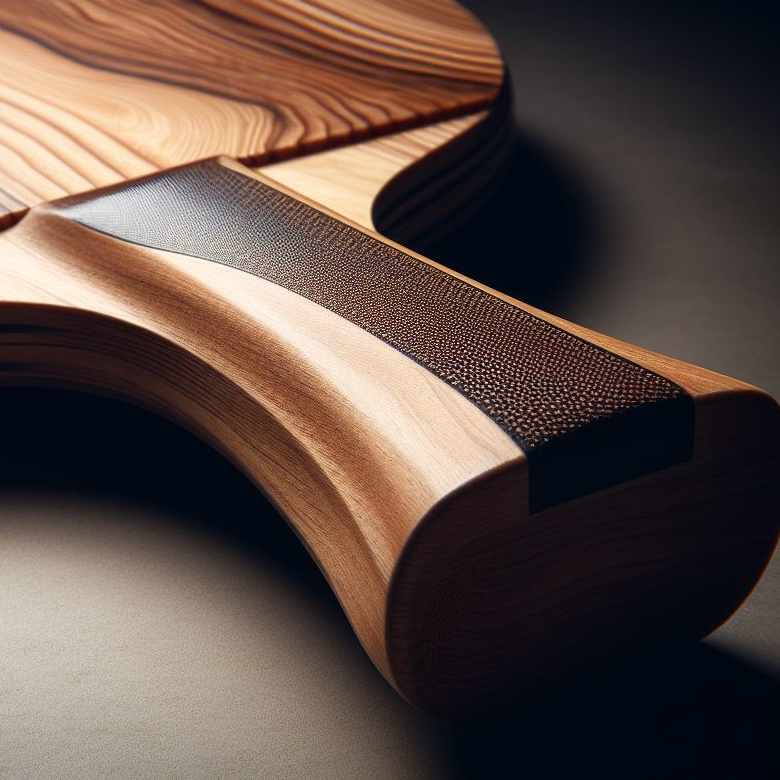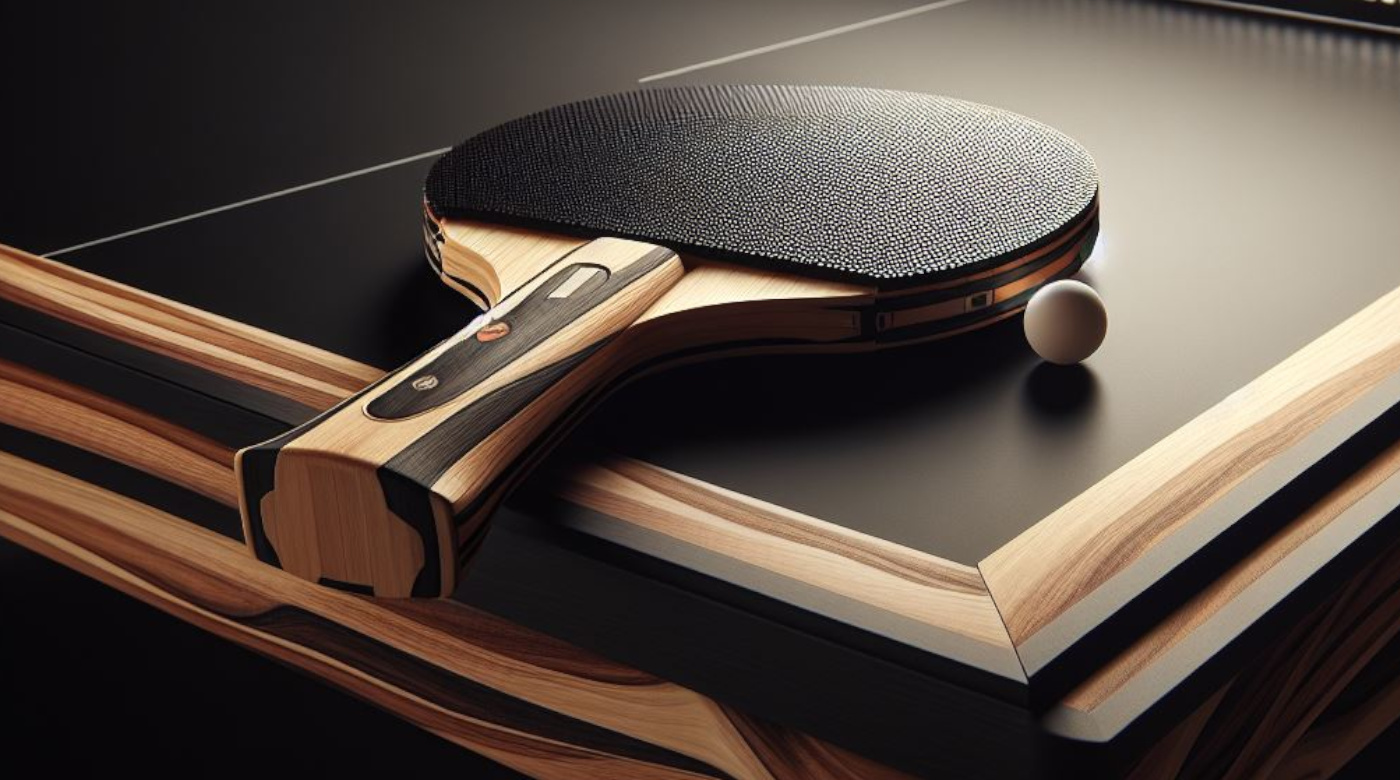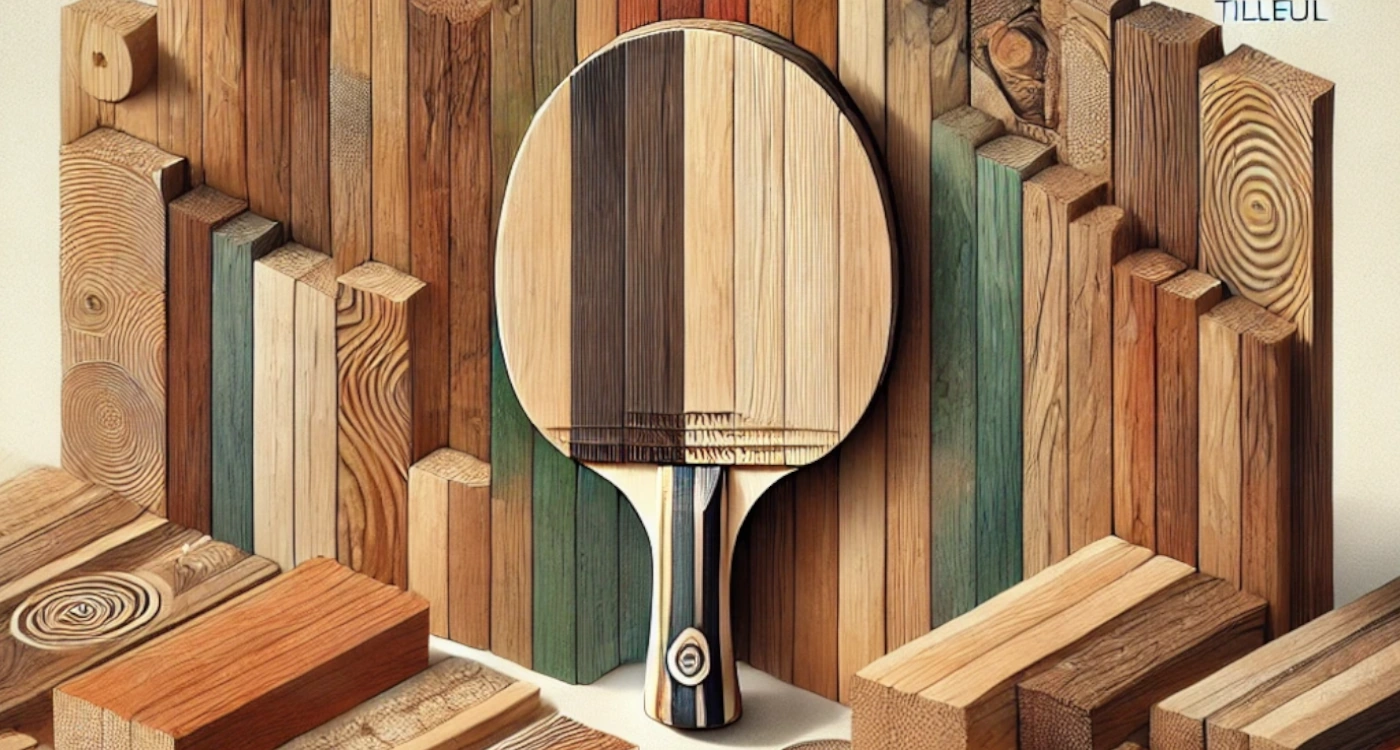Your cart is currently empty!
Types of Wood Used in Table Tennis Paddle Construction
Table tennis, also known as ping pong, is a technical sport where every detail counts. The choice of wood for a table tennis paddle is crucial as it directly influences the player’s performance, speed, control, and feel.
In this article, we explore the different types of wood used in the construction of table tennis paddles, their characteristics, and their impact on the game.
The Importance of Wood in a Table Tennis Paddle
Wood is the main component of the paddle and directly influences its characteristics. According to the regulations of the International Table Tennis Federation (ITTF), a paddle must be composed of at least 85% natural wood.
- Influence on Performance: Wood determines the speed, control, and spin.
- Regulations: A paddle must contain 85% natural wood.
- Types of Wood Used: Softwoods offer more control, while hardwoods provide speed.
Softwoods: For Better Control
Softwoods like balsa, limba, ayous, kiri, honoki, poplar, and basswood are often used for their vibration-absorbing abilities. They allow players to feel the ball more, ideal for control-focused strategies and precise shots.
Examples of Softwoods:
- Balsa: Very light and extremely soft, balsa is ideal for players seeking excellent tactile feedback. However, it is quite fragile and can deteriorate quickly with intensive use.
- Limba: Appreciated for its flexibility, it is often used as an outer layer. It better controls spins and provides a soft feel upon impact.
- Ayous: Often employed for intermediate layers, it combines lightness with good energy return on each shot.
- Kiri: Light and relatively hard, kiri is often used for paddle cores. It ensures good stability and effective control while being less fragile than balsa.
- Honoki: Known for its softness and vibration-absorbing capacity, it provides a smooth and stable playing feel.
- Poplar: A soft and light wood, poplar is often used in intermediate layers to balance control and lightness. It is a popular choice for beginners and defensive players.
- Basswood: Appreciated for its excellent tactile feedback, basswood is often used in inner layers for optimal control. Its moderate weight makes it an ideal option for players seeking precision and flexibility.
Advantages:
- Better ball feel.
- Ideal for defensive players or those preferring a technical game.
- Optimal vibration absorption, reducing arm fatigue.
Disadvantages:
- Less power in fast strokes.
- Less durable than hardwoods.
- Can be easily damaged by impact.
Hardwoods: For More Speed and Power
Hardwoods like koto, walnut, guava, red cedar, and spruce are favored by offensive players. They allow powerful and fast strokes thanks to their rigidity.
Examples of Hardwoods:
- Koto: A rigid wood often used as an outer layer. It provides a quick response, ideal for players seeking aggressive attacks.
- Walnut: With high density, it is prized for internal layers. It offers increased durability and a solid feel upon impact.
- Spruce: A rigid and light wood, often chosen for its excellent energy transfer capabilities and moderate flexibility. It is particularly suitable for internal or external layers.
- Guava: An exotic wood with high density, guava is ideal for players seeking speed and power. It is often used in internal layers to ensure excellent rigidity.
- Red Cedar: This wood combines lightness and rigidity, offering good power in fast strokes. It is used for its durability and resistance to wear.
Advantages:
- Greater speed and power.
- Suitable for offensive players adept at fast and decisive strokes.
- Very durable and resistant to repeated impacts.
Disadvantages:
- Less control than softwoods.
- Playing feel can be too rigid for beginners.
- Often heavier, which can reduce maneuverability.
Composite Woods: An Almost Perfect Combination
Composite woods are combinations of natural wood and synthetic fibers like carbon or aramid. They offer a balance between control and power, meeting the needs of modern players.
Materials Used:
- Carbon: Adds rigidity and increases speed. It minimizes energy loss during strokes.
- Aramid: Known for its absorbing properties, it reduces vibrations to provide better playing comfort.
- Zylon: This innovative material combines lightness and rigidity to maximize precision and speed.
Advantages:
- Good combination of speed and control.
- Ideal for versatile or offensive players seeking a perfect balance.
- Modern materials that increase the paddle’s longevity.
Disadvantages:
- Significant negative environmental impact.
- High cost.
- Playing feel can sometimes be artificial.
- Less customization possible compared to 100% natural woods.
Natural Biocomposite Fibers: An Ecological Alternative
Given the environmental impact of synthetic fibers, brands like Mamba Blades innovate by offering paddles integrating natural biocomposite fibers. These environmentally friendly materials offer exceptional performance while reducing their ecological footprint.
Materials Used:
- Flax Fiber: Light and flexible, it improves control while absorbing vibrations.
- Hemp Fiber: Very resistant, it offers rigidity comparable to synthetic fibers, while being renewable and biodegradable.
- Basalt Fiber: Derived from volcanic rock, this fiber is durable, heat resistant, and provides excellent energy return.
Structure and Layers of a Paddle
A table tennis paddle is composed of several layers. Each layer has a specific function and can include different types of wood.
Typical Composition:
- Outer Layers: Soft or hard wood to adjust the feel. The choice depends on the player’s preference for control or speed.
- Intermediate Layers: Hard wood or composite fibers for rigidity and power.
- Core: Generally made of balsa, ayous, or poplar for lightness, ensuring good overall balance.
Choosing the Right Wood According to Your Playing Style
The choice of wood should reflect your playing style and personal preferences.
Recommendations:
- Defensive Players: Softwoods like limba, ayous, or poplar for increased control.
- Offensive Players: Hardwoods like koto, guava, or red cedar to maximize power.
- Versatile Players: Composite woods or natural fibers for a perfect balance between attack and defense.
Tips:
- Test several types of wood before making your choice.
- Consider the weight, speed, rigidity, and control offered by each wood.
- Take into account your level of play: beginners may prefer softwoods, while advanced players will lean towards composite or natural solutions.
Find the Wood that Unveils Your Potential
Choosing the right wood is a crucial step in optimizing your table tennis performance. Whether it’s softwoods for control, hardwoods for power, or natural fibers for an ecological solution, it’s essential to tailor your paddle to your playing style. Take the time to experiment to find the perfect combination that will help you achieve your goals.
Featured Image: Mamba Blades “Types of Wood for Table Tennis Paddles”
FEEL THE
DIFFERNECE…



